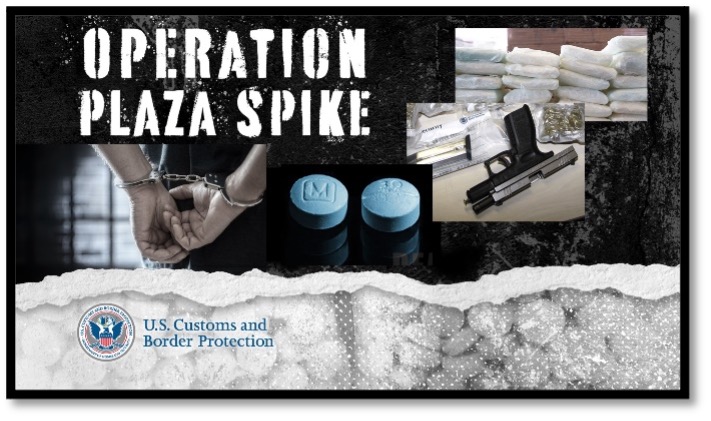CBP is launching Operation Plaza Spike, an operation that targets the gangs and cartels in Mexico that facilitate the flow of deadly fentanyl, as well as its analogs and precursors and tools to make the drugs. This operation is the next step in CBP’s Strategy to Combat Fentanyl and Other Synthetic Drugs, a whole-of-government and international effort to anticipate, identify, mitigate, and disrupt illicit synthetic drug producers, suppliers, and traffickers.
Operation Plaza Spike targets a natural chokepoint in the flow of fentanyl trafficking and will start at the plaza located south of Nogales, Arizona, thereby limiting the amount of illegal drugs, particularly fentanyl, entering the U.S. and the number of illegal weapons headed southbound into the hands of the cartels. From the beginning of fiscal year 2024 to the end of February 2024, CBP has seized 222,000 pounds of drugs, including more than 8,000 pounds of fentanyl. Within this same time period, CBP also seized more than 1,600 weapons and nearly 200,000 rounds of ammunition. For example, during the first two weeks of March 2024, CBP in San Diego stopped 73 different smuggling attempts, seizing 131 pounds of cocaine, 11 pounds of heroin, 10,967 pounds of methamphetamine, and 213 pounds of fentanyl. The total estimated street value of the narcotics was more than $20 million.
The U.S. is plagued with an unprecedented number of overdose deaths, reaching every corner of this country. At the heart of this epidemic is illicit fentanyl – a lethal dose is as small as just 2 milligrams, the size of just a few grains of sand. The drug trade through Mexican “plazas” has accelerated the abuse of synthetic drugs, to include opioids such as fentanyl, its analogues, and heroin, as well as xylazine, methamphetamine, and other chemically synthesized designer drugs.
How will Operation Plaza Spike work?
CBP can converge and focus resources on a natural logistical chokepoint within the cartel's operation and severely hinder its top money-making scheme. Operation Plaza Spike will have three key lines of effort:
- Intelligence
- Disrupt and Degrade Operations
- Deliver Legal Consequences
CBP and partners will support ongoing investigations tied to both plaza operations as well as the plaza boss.
CBP will also focus on the outbound illegal exportation of weapons and currency from the U.S. to the cartels in Mexico, severely hampering their ability to wage violence in furtherance of their drug and human trafficking empire.
CBP will use a variety of actions and authorities, including revoking visas from known associates, scrutinizing related cross-border business entities and cross-border trade, seizing illicit proceeds, and more.
CBP will leverage partnerships, authorities, and resources of other government agencies.
What is a plaza?
A “plaza” is a specific territory controlled by a cartel in Mexico, located in a strategic geographic location, often directly south of a U.S. border crossing. There are 27 plazas operating in Mexico. Plaza bosses: high-ranking cartel official who controls all illicit activity through the plaza – extortion, kidnapping, and the trafficking of humans, dangerous drugs, and firearms.
Nothing happens in the plaza without the plaza boss knowing about, directing it, or taking a cut. Sergio Valenzuela Valenzuela heads the plaza responsible for the most fentanyl heading to the U.S. in Nogales, Mexico. He and his organization are responsible for 44% of the fentanyl being trafficked to the U.S., the deadliest drug we have yet to encounter.



